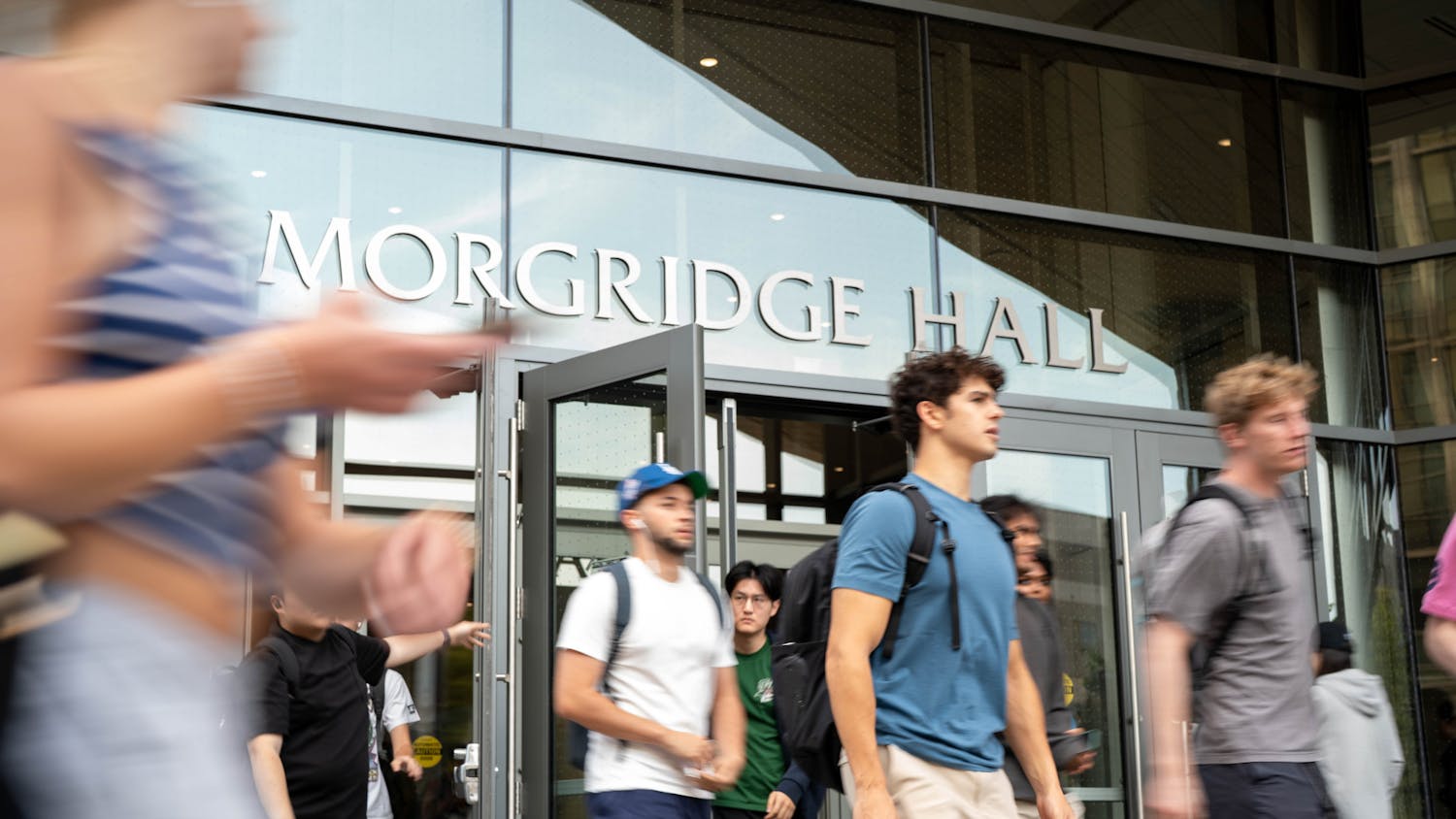Mary Schnell, a 55-year-old grandmother, sits in the hospital lounge waiting for her turn to lie under the large, beige radiotherapy machine. The lights are soft, and it is quiet in the hospital alcove, unlike in the hallway where doctors and nurses shuffle by, checking on patients. A five-year-old blond girl is wheeled by on a gurney, her parents by her side. She has just finished her treatment.
\Her treatment lasted for almost an hour,"" Schnell said. ""I used to take that long at the beginning. Now it only takes 10 minutes.""
Schnell was diagnosed with a non-operable and lethal type of brain cancer called glioblastoma (GBM). More than 3,000 people in the United States are diagnosed with GBM every year. After diagnosis, the average survival for a GBM patient is 10 months. Tumors implant themselves throughout the brain in the same fashion that the root system of a tree spreads out. The disease is inherently resistant to treatment. While surgery and radiation can kill off a major part of the tumor, they cannot reach the deepest, smallest strands that continue their destructive path.
An urgent care doctor insisted Schnell get a CT scan after he treated her for facial swelling and headaches. One week after the scan, Schnell's doctor called and said she had a brain tumor and would need to go to the UW Hospital in Madison for a biopsy.
""I was devastated,""Schnell said.
The biopsy revealed that Schnell had a small tumor. However, the tumor was quickly growing and malignant. Schnell still did not know what type of tumor she had or what her chances for survival were.
Schnell's next appointment was with Dr. Minesh Mehta of the UW Hospital Department of Human Oncology.
""Most patients don't hear what they are told the first time they meet with Dr. Mehta,"" said Lori Hayes, a UW-Hospital nurse who works with Dr. Mehta. ""The only thing most patients can think about on their first meeting with Dr. Mehta is death.""
Mehta won't talk about survival odds at the first appointment. Instead, he will talk about the disease and let the patient get a sense of the problem.
Schnell was lucky because her tumor had not caused any major physical or mental harm. Mehta found Schnell's case particularly interesting since her tumor was small and was detedted early in its growth. Surgery was not an option because her tumor was near vital tissue. Most patients undergo a procedure called resection in which neurosurgeons remove as much of the tumor as possible, followed by focused irradiation of the cancer tissue.
Following Schnell's biopsy, Mehta scheduled her for radiosurgery, a technique in which hundreds of tiny beams of radiation were aimed at the tumor. This procedure is delicate and takes a whole day to complete. The radiosurgical team includes a neurosurgeon, a radiation oncologist and a physicist.
The procedure began in the morning, when a neurosurgeon, using a local anesthetic, pinned a graphite frame to Schnell's head. The frame immobilized her and guided the radiotherapy machine, so that the radiation was delivered accurately.
""Most patients are worried about the pins,"" Hayes said.
Patients are told the insertion feels like a bee sting or a shot of Novocain at the dentist's office. Hayes said most patients say the pain is not as bad as they expect. Following the frame attachment, doctors take a CT scan of Schnell's head.
Schnell wore the frame while waiting for the doctors and physicists to plan her radiosurgery, something that can take between one and five hours. Depth, area and intensity of radiation all must be precisely calculated. The radiation cone must be positioned in exactly the right spot so most of the tiny beams will hit the tumor and not healthy tissue. Schnell's procedure is difficult because the tumor is highly irregular in shape. She spent most of that time watching television. Two-and-a-half hours later, doctors brought Schnell into the radiotherapy room and laid her down under a large machine called a linear accelerator, which is a radiotherapy machine fitted with a special cone. The machine blasted the tumor for 45 minutes with radiation from all directions. She was awake during the entire procedure. Afterwards, Schnell felt no sickness and was able to walk to another room to have the frame removed.
Following radiosurgery, Schnell had over a month of radiotherapy five days a week.
In the beginning, appointments are longer because like radiosurgery, doctors and physicists spend time planning how to adjust the patient's position in relation to the radiation gun.
Radiotherapy differs from radiosurgery in that one large beam circles the patient's head while hitting the tumor, rather than hundreds of tiny beams hitting the tumor. Once doctors know the best beam position, treatment takes about 10 minutes. The mask was tight, the pressure waspainful and indentations were left all over Schnell's face. At the same time, however, she said she can feel the healing from each shot of radiation. Fortunately, Schnell said she never feels sick because of her treatments and has kept most of her hair.
Keeping terminally ill patients' spirits high is the major challenge for doctors, friends and family of the terminally ill. Eventually patients will want to know the exact odds for survival.
""Dr. Mehta says you don't ever want to tell them the odds out of context,"" said Dr. Rakesh Patel, a resident in oncology.
Most statistics of any disease are based on group statistics and populations, not individuals.
""If we made group decisions on the lottery, no one would ever buy a ticket because the odds of winning are so small,"" said Mehta. ""Group decisions are not individual decisions.""
Currently, Mehta's longest-living patient with GBM is 11 years from the time of diagnosis. Mehta said he hopes one day all his patients will beat the current odds and has teamed up with other UW-Madison scientists in attempts to develop new treatments.
Dr. Behnam Badie, a neurosurgeon at the UW Hospital who specializes in brain tumors and works with Mehta, is working on a biological treatment for GBM. He is studying how GBM spreads through the brain and believes a particular cell type allows tumor cells to migrate. Badie wants to harness these cells and use them to deliver toxins to the GBM, which will then kill the tumor.
Meanwhile, one experimental treatment for GBM has already started pre-clinical trials. It is called Tom-otherapy and is being run by UW-Madison medical physicist Rockwell Mackie. It is a precise method of delivering radiation to tumors, and it takes into account the depth, area and shape of a tumor. Current radiotherapy does not allow for the intensity within the beam to be adjusted and, as a result, some parts of the tumor get an uneven amount of radiation. Even though the beam is small, current radiotherapy hits too much healthy tissue.
Tom-otherapy will allow the radiation to conform to the shape of the tumor so all parts will be hit and healthy tissue will be left alone. The UW Hospital is the first hospital in the world to open a Tom-otherapy lab and has already been testing it on animals for over a year. Soon, patients with very advanced forms of cancer will try it first, followed by breast, lung and prostate cancer patients.
Waiting for these new treatments is difficult for Schnell, but she hopes that one day she will benefit from the research.
Schnell has completed her radiotherapy and is now in a ""maintenance"" program. Once every two months she returns to the hospital for an MRI scan. If she feels any pain or symptoms from the cancer she immediately goes to the hospital for an MRI and any follow-up procedures. So far, the cancer is in remission.





